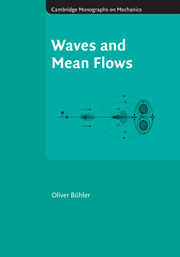1 - Elements of fluid dynamics
from Part I - Fluid Dynamics and Waves
Published online by Cambridge University Press: 29 March 2010
Summary
It is convenient to start with a brief summary of fluid dynamics fundamentals in order to establish the mathematical notation and the physical concepts that will be used throughout this book. We will first look at the kinematics of fluid flow, especially at how to capture the evolution of material elements such as material points or lines.
This is followed by a description of perfect fluid dynamics, which is the natural point of departure for the study of flows at very high Reynolds numbers in the atmosphere and the ocean. In these flows the direct influence of viscous forces is confined to boundary layers and to sparse pockets of three-dimensional turbulence within the fluid.
The culmination of perfect fluid dynamics is Kelvin's circulation theorem and the various links of this theorem to vorticity dynamics. Indeed, as we go on it will become increasingly clear that the circulation theorem is also the key result in wave–mean interaction theory.
Flow kinematics
In continuum fluid mechanics the molecular structure of the fluid is ignored and the description of the physical state of the fluid is accomplished by specifying a finite number of flow fields as functions of position x and time t, say. How many fields are needed depends on the complexity of the fluid under consideration, but all fluid flows require a working mass and momentum budget, which leads to the definitions of the density and velocity fields.
- Type
- Chapter
- Information
- Waves and Mean Flows , pp. 3 - 20Publisher: Cambridge University PressPrint publication year: 2009

